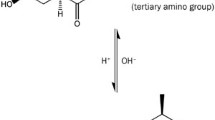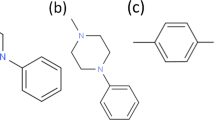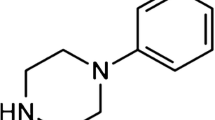Abstract
Purpose. Three types of acyl tetragastrin (TG), acetyl-TG (C2-TG), butyryl-TG (C4-TG) and caproyl-TG (C6-TG) were synthesized and their in vitro intestinal permeability characteristics were examined using Caco-2 monolayers.
Methods. The disappearance of acyl-TGs from the apical side of Caco-2 monolayers was estimated by analyzing degradation and permeation processes in terms of clearance.
Results. The amount of native TG transported to the basolateral side was very low due to its large degradation clearance (CLd) on the apical side. Degradation of TG was reduced by chemical modification with fatty acids, which resulted in an increase in the transport of TG across Caco-2 monolayers. In addition, the permeation clearance (CLp) value of carboxyfluorescein (CF), a paracellular transport and undegradable marker, was increased in the presence of acyl-TGs. Furthermore, we investigated the effects of the protease inhibitors bacitracin and gabexate on the transport of TG across Caco-2 monolayers. In the presence of a low concentration (0.1 mM) of protease inhibitor, the CLd value of TG was reduced, but they did not affect its CLp value. However, a higher concentration (1.0 mM) of bacitracin significantly reduced TG degradation on the apical side, and further increased its CLp value.
Conclusions. We demonstrated that acylation of TG made it resistant to intestinal proteases and caused it to enhance absorption of drugs, including itself, across Caco-2 monolayers. Further, bacitracin acted as both a protease inhibitor and an absorption enhancer.
Similar content being viewed by others
REFERENCES
T. Tenma, E. Yodoya, S. Tashima, T. Fujita, M. Murakami, A. Yamamoto, and S. Muranishi. Development of new lipophilic derivatives of tetragastrin: Physicochemical characteristics and intestinal absorption of acyl-tetragastrin derivatives in rats. Pharm. Res. 10:1488–1492 (1993).
J. H. Walsh and L. Laster. Enzymatic deamidation of the C-terminal tetrapeptide amide of gastrin by mammalian tissue. Biochem. Med. 8:432–449 (1973).
H. J. Tracy and R. A. Gregory. Physiological properties of a series of synthetic peptides structurally related to gastrin I. Nature 204:935–938 (1964).
J. S. Morley, H. L. Tracy, and R. A. Gregory. Structure function relationships in active C-terminal tetrapeptide sequence of gastrin. Nature 207:1356–1359 (1965).
H. M. Jennewein, F. Waidech, and W. Konz. The absorption of tetragastrin from different sites in rats and dogs. Arzneim. Forsch. (Drug Res.) 24:1225–1228 (1974).
L. Laster and J. H. Walsh. Enzymatic degradation of C-terminal tetrapeptide amide gastrin by mammalian tissue extracts. Fed. Proc. 27:1328–1330 (1968).
E. Yodoya, K. Uemura, T. Tenma, T. Fujita, M. Murakami, A. Yamamoto, and S. Muranishi. Enhancement permeability of tetragastrin across the intestinal membrane and its reduced degradation by acylation with various fatty acids in rats. J. Pharmacol. Exp. Ther. 271:1509–1513 (1994).
K. Setoh, M. Murakami, N. Araki, T. Fujita, A. Yamamoto, and S. Muranishi. Improvement of transdermal delivery of tetragastrin by lipophilic modification with fatty acids. J. Pharm. Pharmacol. 47:808–811 (1995).
O. H. Lowry, N. J. Rosebrough, A. L. Farr, and R. J. Randall. Protein measurement with the Folin phenol reagents. J. Biol. Chem. 193:265–275 (1951).
I. J. Hidalgo, T. J. Raub, and R. T. Borchardt. Characterization of human colon carcinoma cell line (Caco-2) as a model system for intestinal epithelial permeability. Gastroenterology 96:736–749 (1989).
K. L. Audus, R. L. Bartel, I. T. J. Hidalgo, and R. T. Borchardt. The use of cultured epithelial and endothelial cells for drug transport and metabolism studies. Pharm. Res. 7:435–451 (1990).
T. Fujita, I. Kawahara, M. Yamamoto, A. Yamamoto, and S. Muranishi. Comparison of permeability of macromolecular drugs across cultured intestinal and alveolar epithelial monolayers. Pharm. Sci. 1:231–234 (1995).
S. Howell, A. J. Kenny, and A. J. Turner. A survey of membrane peptidases in two human colonic cell lines, Caco-2 and HT-29. Biochem. J. 284:595–601 (1992).
M. Takeyama, T. Ishida, N. Kokubu, F. Komada, S. Iwakawa, K. Okumura, and R. Hori. Enhanced bioavailability of subcutaneously injected insulin by pretreatment with ointment containing protease inhibitors. Pharm. Res. 8:60–64 (1991).
K. Morimoto, H. Yamaguchi, Y. Iwakawa, M. Miyazaki, E. Nakatani, T. Iwamoto, Y. Ohashi, and Y. Nakai. Effects of proteolytic enzyme inhibitors on the nasal absorption of vasopressin and an analogue. Pharm. Res. 8:1175–1179 (1991).
S. Gotoh, R. Nakamura, M. Nishiyama, T. Fujita, A. Yamamoto, and S. Muranishi. Does bacitracin have absorption-enhancing effects in the intestine? Biol. Pharm. Bull. 18:794–796 (1995).
S. Gotoh, R. Nakamura, M. Nishiyama, Y.-S. Quan, T. Fujita, A. Yamamoto, and S. Muranishi. Effects of protease inhibitors on the absorption of phenol red and fluorescein isothiocyanate dextrans from the rat intestine. J. Pharm. Sci. 85:858–862 (1996).
Y. Taki, T. Sakane, T. Nadai, H. Sezaki, G. L. Amidon, P. Langguth, and S. Yamashita. Gastrointestinal absorption of peptide drug: quantitative evaluation of the degradation and the permeation of metkephamid in rat small intestine. J. Pharmacol. Exp. Ther. 274:373–377 (1995).
Author information
Authors and Affiliations
Rights and permissions
About this article
Cite this article
Fujita, T., Kawahara, I., Quan, Ys. et al. Permeability Characteristics of Tetragastrins Across Intestinal Membranes Using the Caco-2 Monolayer System: Comparison Between Acylation and Application of Protease Inhibitors. Pharm Res 15, 1387–1392 (1998). https://doi.org/10.1023/A:1011997404306
Issue Date:
DOI: https://doi.org/10.1023/A:1011997404306




